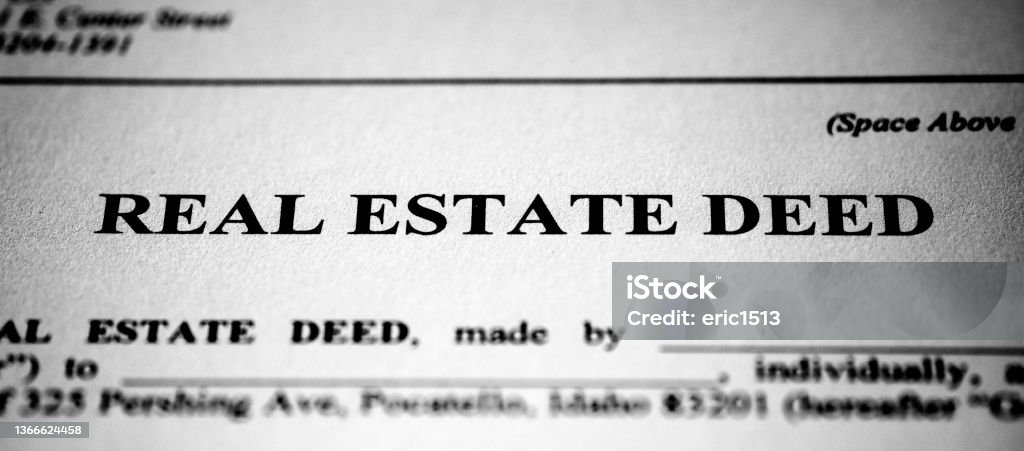Understanding how to transfer your property ownership is key. The bigger the price tag, the more intricate the process can get, especially with government recording involved. Here’s a quick guide of what you need to know about property transfer in the US.
OVERVIEW ABOUT THE US PROPERTY’S OWNERSHIP
According to US law, your property falls into two main categories: real estate (which is called real property or realty, like a house or land), and movable property (which is the same as personal property or personalty, like a car or furniture). On top of that, US law also classifies your assets into tangible property (like a book) and intangible property (like an idea or stock certificate).
Ownership rights in the US gives you a ton of rights. These include the (1) right to use rights, (2) right to use, (3) exclusive rights and (4) right to definition. You can own things by yourself, or you can share ownership with others. There are different ways to share ownership, like joint ownership or tenancy in common.
KEY RIGHTS OF PROPERTY OWNERS
In the US, state laws give real estate owners some key rights:
(1) Rights to enjoy real estate (quiet enjoyment): they can live there, manage it, and keep others out as long as it’s legal.
(2) Rights to use mineral: The owner of real property has the right to extract all oil or gas from wells drilled on their land, even if the oil or gas originates from beneath a neighbor’s property. They must, however, exercise caution while drilling to avoid causing fires, explosions, or draining a significant amount of oil or gas from neighboring land.
(3) Rights to use water: For groundwater, Eastern states with abundant water follow the rule of capture. This means the landowner has the right to take and use groundwater on their property if they avoid wasteful use. For Western and some Eastern states with scarce water, landowners have the right to pump groundwater for reasonable use, without limits on volume, but cannot transport it elsewhere if it harms neighbors. For surface water, ownership belongs to whoever captures it, but its use cannot harm downstream property owners.
RIGHTS TO TRANSFER PROPERTY
Among those key rights, one of the best perks when being a property owner is the ability to transfer it, whether by selling it or giving it away as a gift. But no matter how you relinquish ownership, you always need to officially transfer the title to the new owner.

To be a bit more specific, “transfer of property is a legal process of conveying ownership rights and interests in a property from one person or entity to another based on certain laws. The conveyance may be in respect of real or personal property from a seller, donor, or grantor (the transferring party) to a buyer, recipient, or grantee (the receiving party)”.
Usually, when ownership of real estate changes hands, it’s done through a legal document called a deed. Deed lets you transfer ownership to anyone, be it a buyer, family, organization, or even a trust. It also specifies what kind of ownership rights are being transferred. And creating and filing this deed with the local government office officially completes the process of a property transfer.
COMMON TYPES OF PROPERTY DEED TRANSFER
There are different types of deed options available, some of them are:
- Will Deed
There are three ways your property gets handled after you pass away. (1) With a will: this lets you decide who inherits your stuff. If they agree to the terms and take the property you leave them, they officially own it. (2) No will: if you don’t have a will, the law (descent) decides who gets your property, following a set order (usually family members). (3) No will and no heirs: if you have no will and no close relatives, the property goes to the state (escheat).
- Gift Deed
A gift deed is a legal document where you give away property as a gift, typically to your family. No money is involved, but there are some fees. You will need to register the gift deed with a local government office, which usually costs between 1% and 7% of the property value in stamp duty depending on your state. Additionally, there í also a registration fee of around 0.5% to 1%.

- Relinquishment Deed
A relinquishment deed is a legal document used when you voluntarily give up your ownership share in a property you co-own with your family. It’s a binding agreement, so once you sign it, the ownership changes officially. Just like with gift deeds, you’ll need to register it with the government and pay some fees. These fees such as stamp duty, taxes, and registration can vary by state.
- Warranty Deed
A Warranty Deed is like a guarantee for your new house. It basically says the seller is the true owner and there are no hidden claims on the property, like debts owed by the seller. This means creditors can’t come after your house! Warranty Deeds are common for buying homes, especially from someone you don’t know well. If you want to be sure you’re getting a clean and clear title, a Warranty Deed is the way to go.
- Quitclaim Deed
A quitclaim deed is like a simple transfer of ownership, but without any promises about the property. Unlike a warranty deed, it doesn’t guarantee the seller has a perfectly clean title. Because of that, it’s usually used between people who trust each other a lot, like family members. They’re handy for situations where ownership needs to change but there’s no money involved.
- Survivorship Deed
According to Law Depot, a Survivorship Deed is a document that allows a residential or commercial property to transfer from a property owner to two or more property owners. A Survivorship Deed creates a joint tenancy among the new owners. Once transferred, each grantee owns an equal share of the property. Since these shares are not distinct, the new owners cannot transfer them to anyone else or distribute them in their Wills. When one of the new owners passes away, their share is equally divided among the remaining owners. The last living owner will own 100% of the property.
HOW DOES A PROPERTY TRANSFER PROCESS LOOK LIKE?
To make sure your property transfer process going smoothly, follow these steps:
- Discuss with the new owners about the deed’s details
This is about who owns what and what happens if someone dies. Most families choose “joint tenancy with right of survivorship,” which means the property automatically goes to the remaining owners if someone dies, saving them time and money on legal fees.
- Having a real estate attorney to draft the deed
You might be tempted to do the paperwork yourself, but especially with Warranty Deeds which guarantee clear ownership, it can get tricky. These deeds involve your personal information, details about the family member receiving the property, and a specific legal description of the land.
While you can find that description in government records or your old deed, having a lawyer walk you through it all can save a lot of hassle and ensure everything is accurate.

- Take some time to go over the deed
Before making it official, give the deed a thorough review. Make sure all the details are accurate and complete, especially the full legal names and addresses of the seller and buyer. Pay close attention to the legal description of the property. Don’t sign anything just yet, even though there will be blank spaces for signatures.
- Sign the deed in front of a notary public, with witness’s present
Once everything looks good, it’s time to make it official. In most states, the deed needs to be signed by all sellers in front of a notary public, who acts as an official witness. Sometimes, additional witnesses might be required depending on your state’s law. The notary will then add their signature and seal to the document, making it official. And don’t worry, the buyer doesn’t need to sign anything at this point.
- Submit the deed to the appropriate government office for official recording.
For the deed to become legally binding, it requires the signatures of all sellers, witnessed by a notary public and any additional witnesses mandated by your state’s regulations.
TAX CONSEQUENCES OF PROPERTY TRANSFER
Unlike a simple gift, transferring property usually involves taxes. These property transfer taxes are mostly based on the value of the property and vary by state.
For example, Arizona charges a flat $2 fee, while Texas doesn’t charge anything at all. Other states might have a percentage-based tax that can go above 2%.
Normally, the seller foots the bill for the property transfer tax. But there can be exceptions. Sometimes, the seller and buyer agree in their contract (Real Estate Purchase Agreement) that the buyer will pay the tax.

There’s usually no transfer tax if you’re giving away property, not selling it. However, there might still be taxes called estate or gift taxes depending on the value you give away. So, it’s a good idea to check with a tax professional before making any big moves.
FAQ ABOUT PROPERTY TRANSFER
- What about transferring ownership without a Deed?
Some may wonder if it is always a must to transfer property with a deed. Here’s the deal:
Joint Tenants: If you co-own property with someone as “joint tenants” (meaning you both have equal rights and it automatically goes to the survivor if one of you passes away), then a deed isn’t needed when one owner dies. Ownership automatically transfers to the remaining owners.
Tenants in Common: This is another way to co-own property, but in this case, you can leave your share to your heirs in a will. You need to specify how you own the property (joint tenants or tenants in common) on the deed. If you don’t specify, most states default to tenants in common.
- What if instead of transferring the title, you leave your property as an inheritance for a loved one — is that easier for both parties?
Possibly. Still, it depends! It is easier (and more importantly) to ask yourself: Does your loved one need the property now, or can they wait until you pass away?
If they can wait, inheriting might be a better tax option: In this case, the property value gets “reset” to its market value at the time of your death, potentially saving them taxes when they sell it later.
For example: If you bought land for $25,000 and it’s now worth $250,000, giving it away now would mean your child inherits a tax basis of $25,000 (they would owe tax on the $225,000 increase when they sell).
But, if you leave it to them in your will, the tax basis becomes $250,000, which is the current value, so they wouldn’t owe any capital gains tax if they sell it at the same price.
In this example, waiting to inherit saves them a significant amount of money in taxes.
Reece Almond
Disclaimer: The blog articles are intended for educational and informational purposes only. Nothing in the content is designed to be legal or financial advice.

